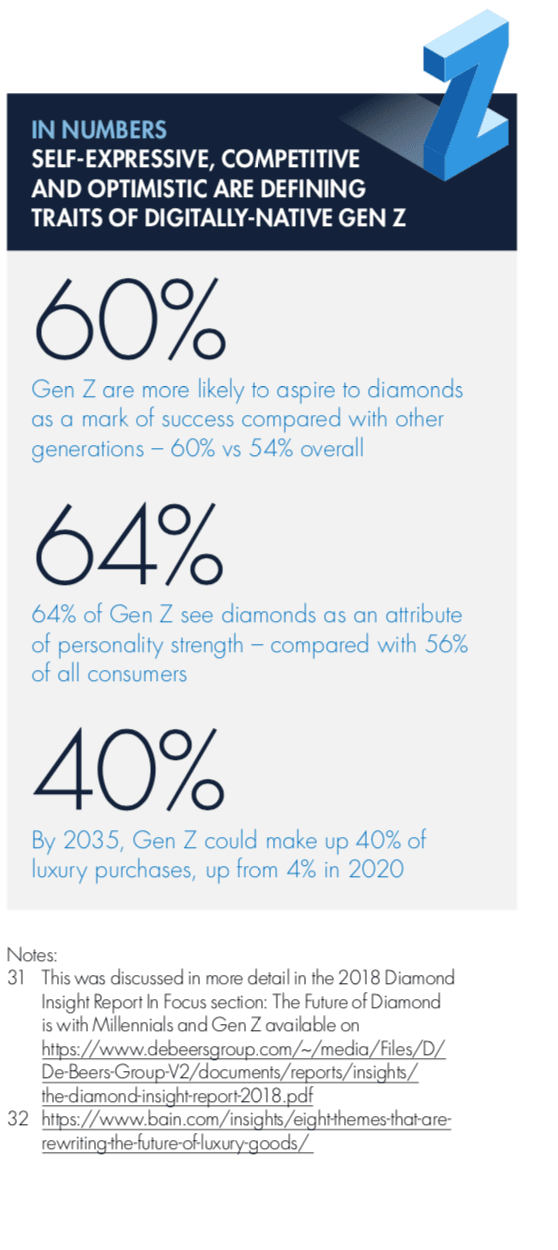Understanding Gen Z

For the purposes of this report, Gen Z refers to adults born from 2000 onwards in the US or from 1998 in China. Gen Z is the next major generation of potential diamond acquirers and is expected to have a profound impact on the diamond industry as it comes of age. As such, in exploring the four megatrends presented in this report, a dedicated lens has been placed on Gen Z to understand the unique perspective and influence of this group. The insights are designed to help trade participants fully capture the opportunities presented by Gen Z as it matures.
As the generation is still very young, the research findings presented in this report include only Gen Z’s oldest members. In the US, this accounts for five per cent of the adult (18 – 74) female population and the same proportion of diamond jewellery acquirers – although represents only two per cent of diamond acquisitions by value, as the generation’s young age means its diamond spend is still below average. In China, where the adult market for diamonds is considered 18 to 54, Gen Z accounts for 10 per cent of the population and five per cent of diamond acquisitions by both volume and value. But this contribution will increase significantly in the years to come, underpinned by the current positive attitudes of Gen Z towards diamonds.
De Beers Group has worked with specialised agencies and undertaken surveys with Gen Z to understand what motivates them. This work found that unique traits of Gen Z adults are that they tend to be self-expressive, competitive and optimistic. Entrepreneurship and personal achievement are important to them31. They are more likely than other generations to aspire to diamonds as a mark of success (60 per cent versus 54 per cent overall), with nearly two in three (64 per cent) seeing diamonds as an attribute of personality strength – compared with an average among all consumers of a little over a half (56 per cent). Diamond marketers should look to communicate this symbolism of diamonds when engaging with Gen Z.
Another very important, even defining, characteristic of Gen Z is their relationship with the digital world. As digital natives who have grown up in a world where technology is a way of life, they expect full integration of physical and digital (i.e. phygital) when they shop and interact with brands.
These are tomorrow’s big spenders. While Gen Z accounted for only four per cent of luxury purchases in 2020, by 2035 its share could grow to 40 per cent.32 It is therefore critical for retailers and brands to capture the hearts and minds of this generation.

Source: 2022 De Beers Insight Report